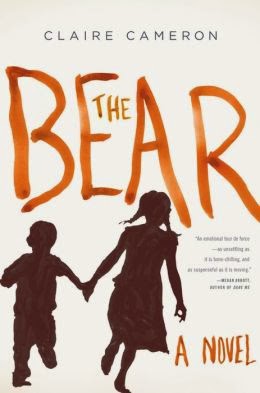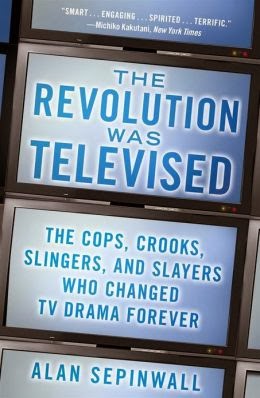Gregory Spatz is the author of the novels
Inukshuk, Fiddler’s Dream, and
No One But Us, and the short fiction collections
Wonderful Tricks and
Half as Happy. He has also written for the
Oxford American 
and
Poets and Writers and his stories have appeared in many publications, including
The New Yorker. He is the recipient of a Washington State Book Award, Spokane Arts Commission Individual Artist of the Year Award, and National Endowment for the Arts Literature Fellowship. A graduate of the Iowa Writers’ Workshop, he teaches in the MFA program at the Inland Northwest Center for Writers at Eastern Washington University.
A few weeks ago I asked Spatz about what he was reading. His reply:
The past couple of weeks I’ve had the opportunity to re-read two of my all-time favorite books for a graduate novel writing workshop that I’m teaching: So Long See You Tomorrow, by William Maxwell and Stoner, by John Williams.
So Long See You Tomorrow has one of the most interesting hybrid forms I’ve encountered—half meditative essay/memoir exploring the death of Maxwell’s mother and the period of time immediately following, told in a dispassionate but heartrending first-person retrospective; part third-person omniscient story of adultery, murder and suicide. Through all of it, Maxwell’s transparent and understated style of narration, his patient and capacious voice, works like magic. The scenes  and paragraphs seem to digress and dissolve sideways but always land you exactly where you need to be for the story to progress. The viewpoint shifts fluidly from murderer, to estranged lover, to child, to great aunt, to the farm dog, and back again, with no whiplash or confusion. Like the Alberto Giacometti sculpture, The Palace at 4 AM, which evidently inspired some of the book’s writing or conception, So Long See You Tomorrow seems to imply a form beyond its outlines, and then to transcend that form.
and paragraphs seem to digress and dissolve sideways but always land you exactly where you need to be for the story to progress. The viewpoint shifts fluidly from murderer, to estranged lover, to child, to great aunt, to the farm dog, and back again, with no whiplash or confusion. Like the Alberto Giacometti sculpture, The Palace at 4 AM, which evidently inspired some of the book’s writing or conception, So Long See You Tomorrow seems to imply a form beyond its outlines, and then to transcend that form.
I used to worry that if I described Stoner by saying what it’s about and providing a plot synopsis, people would be put off from reading it. The book had few enough fans, I didn’t see a reason to scare away any more. So instead I’d say, “It’s good,” or “Hard to describe,” or “Just read it.”
Fact is, Stoner is not an easy book, and not a book to read for plot—tale of an obscure academic and his lifelong love of books and of teaching—it’s a book to read for its sheer mastery of language. Lines with a stone-like certainty and ring of truth, and insights and observations so perfectly mitered you want to read them over and over. And for the precisely detailed depictions of all the odds and obstacles in the main character William  Stoner’s path—an extremely rural and unprivileged upbringing; a loveless marriage to a tyrannical woman; a capricious, even demonic department chair; two world wars; a love affair which ends in alienation and isolation—but ultimately for Stoner’s private triumph over all these odds. As John Williams says in the book’s introduction, William Stoner is a “real hero.” His love of teaching and of books, his unflagging dedication and integrity, these sustain him through it all; he gets to spend his life doing what he loves and what he does best. His quiet, profound persistence speaks to us across the generations.
Stoner’s path—an extremely rural and unprivileged upbringing; a loveless marriage to a tyrannical woman; a capricious, even demonic department chair; two world wars; a love affair which ends in alienation and isolation—but ultimately for Stoner’s private triumph over all these odds. As John Williams says in the book’s introduction, William Stoner is a “real hero.” His love of teaching and of books, his unflagging dedication and integrity, these sustain him through it all; he gets to spend his life doing what he loves and what he does best. His quiet, profound persistence speaks to us across the generations.
I used to worry about underselling Stoner because until a year or two ago the book was largely unknown. Luckily, thanks to wild sales surges throughout Europe, and subsequent rave NPR and New York Times articles (and elsewhere), the book is suddenly gaining the attention it’s long deserved. It is one of the finest and most perfect things I’ve ever read.
Visit
Gregory Spatz's website.
The Page 69 Test: Half as Happy.
--Marshal Zeringue
 J.T. Ellison is the New York Times bestselling author of eleven critically acclaimed novels, including The Final Cut with Catherine Coulter, When Shadows Fall, Edge of Black and A Deeper Darkness. Her work has been published in over twenty countries. Her novel The Cold Room won the ITW Thriller Award for Best Paperback Original and Where All The Dead Lie was a RITA® Nominee for Best Romantic Suspense. She lives in Nashville with her husband.
J.T. Ellison is the New York Times bestselling author of eleven critically acclaimed novels, including The Final Cut with Catherine Coulter, When Shadows Fall, Edge of Black and A Deeper Darkness. Her work has been published in over twenty countries. Her novel The Cold Room won the ITW Thriller Award for Best Paperback Original and Where All The Dead Lie was a RITA® Nominee for Best Romantic Suspense. She lives in Nashville with her husband.Gabriel Allon books, love the depth of the characters, and I’m always fascinated by Silva’s omniscient narrative. I normally write in close third, so it’s very helpful to step into a different structure and see how easily the story unfolds.













































